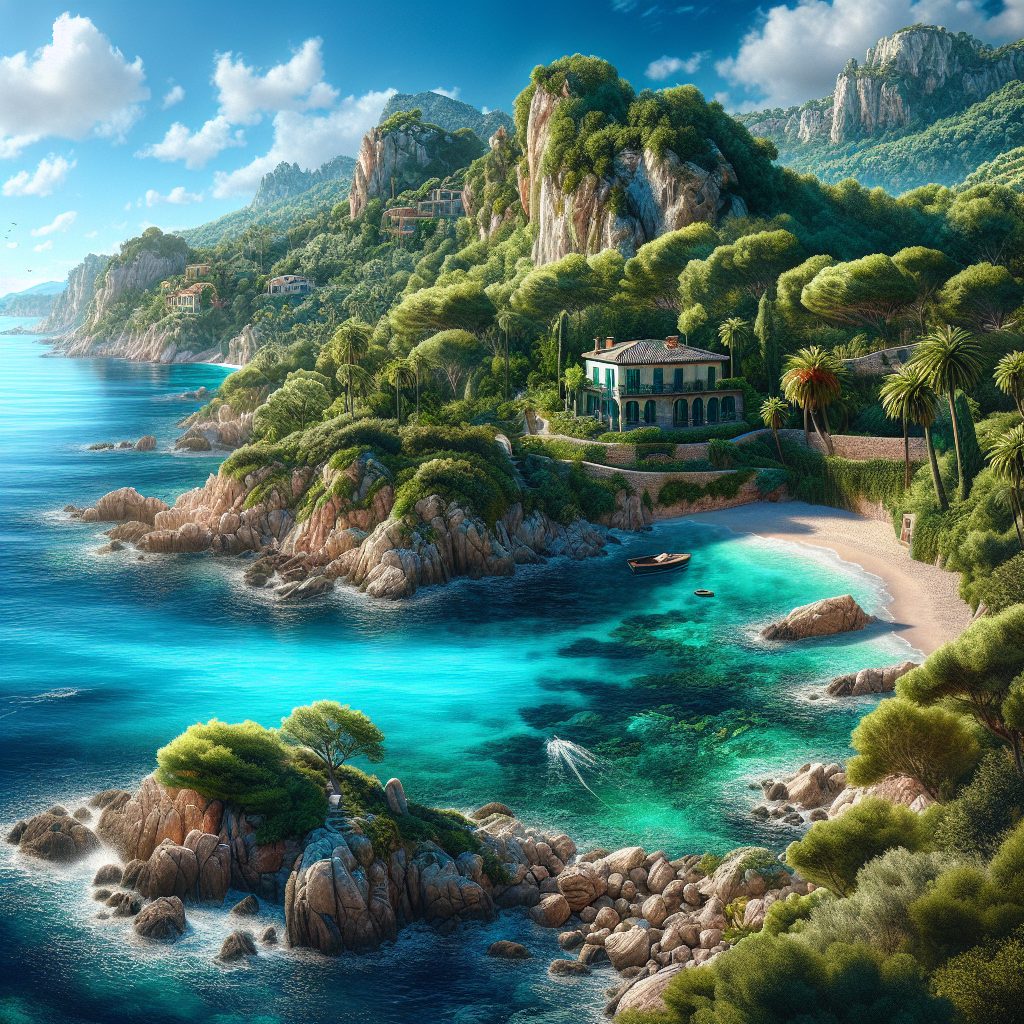Nuraghe and Ancient Sardinian Life
Nuraghe refers to the ancient stone structures found in Sardinia, Italy, that were built by the Nuragic civilization between the 18th and 2nd centuries BC. These unique structures are often compared to ancient castles due to their massive size and fascinating architectural features. With over 7,000 nuraghe still standing today, they serve as a testament to the rich history and advanced civilization that once thrived on this Mediterranean island.
The nuraghe were not simply fortresses or defensive structures; they were also central to the cultural, social, and religious aspects of Ancient Sardinian life. These ancient stone towers were not only homes for the inhabitants but also served as communal gathering spaces, religious sites, and symbols of social status. The intricate designs and strategic positioning of the nuraghe showcase the advanced engineering and construction techniques of the Nuragic people, offering valuable insights into their way of life.
Key Takeaways
1. Nuraghe are ancient stone towers found in Sardinia, which were central to the island’s Bronze Age civilization and played an essential role in the daily lives of its inhabitants.
2. These unique structures were built by the Nuragic civilization between 1800 BC and 238 BC and served as defensive fortifications, religious sites, and symbols of power.
3. The Nuragic people were skilled in metallurgy, evidenced by the vast amount of bronze objects discovered, including weapons, tools, and intricate artifacts.
4. The Nuragic society was highly organized, with evidence of a central authority governing the island. They had a complex social structure, as well as a well-developed agricultural system and a strong economy based on trade.
5. Excavations of Nuraghe sites have provided valuable insights into ancient Sardinian life, shedding light on topics such as religious practices, burial customs, social hierarchy, and technological advancements.
What is the significance of Nuraghe in Ancient Sardinian Life?
The Origins of Nuraghe
Nuraghe is a unique architectural structure that can be found throughout the island of Sardinia, Italy. These ancient monuments are believed to have been built by the Nuragic civilization, which thrived on the island from around 1800 BCE to 238 BCE. The origins of the Nuragic people and their fascinating architectural creations are still shrouded in mystery.
The Structure and Types of Nuraghe
Nuraghe structures are characterized by their distinctive cone or tower-like shapes, built primarily using limestone blocks. These towers vary in size, with some reaching up to 20 meters in height. There are several types of Nuraghe, including the “simple” Nuraghe, composed of a single tower, and the more complex Nuraghe complexes, consisting of multiple towers surrounded by defensive walls.
Functions and Significance
The primary function of Nuraghe in Ancient Sardinian Life remains a subject of debate among scholars. Some believe that they served as defensive structures, providing protection against external threats. Others argue that Nuraghe played a role in religious or ceremonial practices, acting as sacred spaces. Additionally, these structures likely served as symbols of power and communal identity.
A Glimpse into Ancient Sardinian Life
Nuraghe provides valuable insights into the daily life and culture of the ancient Sardinians. Archaeological evidence suggests that these structures were inhabited, with various rooms serving different purposes, such as living quarters or storage areas. The artifacts discovered within Nuraghe sites, such as pottery, tools, and jewelry, shed light on the craftsmanship and technological advancements of the Nuragic civilization.
The Legacy of Nuraghe
Despite the passage of millennia, Nuraghe continues to define the cultural landscape of Sardinia. These ancient structures have become iconic symbols of the island’s rich historical heritage. Recognized as a UNESCO World Heritage site, Nuraghe attracts visitors from around the world, seeking to explore the mysteries of the Nuragic civilization and gain a deeper understanding of Ancient Sardinian Life.
Guides and Tips: How to Explore Nuraghe and Ancient Sardinian Life
1. Visit Nuraghe Sites: Plan a trip to Sardinia and explore the numerous Nuraghe sites scattered across the island. Some popular sites include Su Nuraxi di Barumini, Nuraghe Losa, and Nuraghe Santu Antine.
2. Join Guided Tours: Enhance your experience by joining guided tours led by knowledgeable local guides. They can provide in-depth information about Nuraghe, the Nuragic civilization, and Ancient Sardinian Life.
3. Immerse in the Archaeological Museums: Explore the artifacts and exhibits related to Nuraghe and the Nuragic civilization in Sardinian archaeological museums. Museo Archeologico Nazionale di Cagliari and Museo Archelogico di Nuoro are excellent options to dive into the rich history.
4. Attend Cultural Events: Keep an eye on cultural events and festivals that celebrate Ancient Sardinian Life. These occasions often feature traditional music, dances, and performances, providing a glimpse into the island’s cultural heritage.
5. Sample Sardinian Cuisine: Taste the unique flavors of Sardinia by trying traditional dishes inspired by Ancient Sardinian Life. Savor regional specialties like culurgiones (stuffed pasta), pane carasau (crispy flatbread), and seadas (fried pastries with cheese and honey).
Remember, exploring Nuraghe and Ancient Sardinian Life is a journey to unravel the mysteries of an ancient civilization that has left an indelible mark on the island’s identity. Enjoy the adventure and delve into the intriguing past of Sardinia.
Frequently Asked Questions
What is a Nuraghe?
A Nuraghe is a unique type of ancient stone structure found in Sardinia, Italy. These impressive towers were built during the Nuragic civilization, which thrived on the island between 1800 and 550 BCE.
How were Nuraghe structures built?
Nuraghe structures were constructed using large stones without the use of mortar. The stones were carefully stacked to create circular or quadrangular towers, reaching heights of up to 20 meters. Each Nuraghe had a central chamber and multiple floors, accessed through internal stairs or ramps.
What was the purpose of Nuraghe buildings?
The exact purpose of Nuraghe buildings is still debated among historians and archeologists. Some theories suggest they served as defensive structures, offering protection against invasions. Others propose that they were religious or ceremonial centers, or perhaps even dwellings for high-ranking individuals.
How many Nuraghe structures are still standing in Sardinia?
There are estimated to be around 7,000 Nuraghe structures that remain in Sardinia today. Some are remarkably well-preserved, while others have suffered deterioration over time due to natural causes or human activity.
What other archaeological findings are associated with Nuraghe?
Alongside the Nuraghe structures, several other archaeological findings have been discovered in Sardinia. These include Nuragic villages, megalithic tombs, and bronze statues called “bronzetti.” Together, they provide valuable insights into the ancient Sardinian way of life.
Can Nuraghe visits be arranged for tourists?
Absolutely! Many Nuraghe sites in Sardinia are open to visitors and offer guided tours. Exploring these historical sites gives tourists the opportunity to learn about the ancient Sardinian civilization, their incredible architectural skills, and their fascinating culture.
Are there any Nuraghe sites that are UNESCO World Heritage listed?
Yes, there are multiple Nuraghe sites in Sardinia that have been recognized as UNESCO World Heritage sites. Some notable examples include the Su Nuraxi in Barumini, Nuraghe Santu Antine in Torralba, and Nuraghe Losa in Abbasanta.
What can we learn about ancient Sardinian life from studying Nuraghe?
Studying Nuraghe structures provides valuable insights into the daily life, social organization, and architectural skills of the ancient Sardinians. It helps us understand their construction techniques, agricultural practices, and possibly even their belief systems and political structures.
What other attractions can visitors experience in Sardinia?
Sardinia offers a wealth of attractions for visitors apart from Nuraghe sites. From stunning beaches and crystal-clear waters to charming medieval towns and delicious cuisine, the island has something for everyone. Additionally, Sardinia boasts a rich cultural heritage with museums, archaeological sites, and traditional festivals.
How can I delve deeper into the subject of Nuraghe and Ancient Sardinian Life?
To further explore the topic of Nuraghe and Ancient Sardinian Life, you can delve into research articles, archeological publications, and books dedicated to this fascinating subject. Additionally, visiting Sardinia and experiencing the Nuraghe sites firsthand can provide a deeper understanding of this ancient civilization.
Final Thoughts
Studying Nuraghe and Ancient Sardinian Life opens a window into an intriguing and mysterious civilization. The Nuragic people left behind an architectural legacy that continues to captivate researchers and visitors alike. Through these ancient stone structures, we catch glimpses of the rich tapestry of the past, shedding light on the lives of our ancestors and the marvels they accomplished.
By exploring Nuraghe sites and delving into the historical and cultural context surrounding them, we can immerse ourselves in a journey of discovery. From the unique construction techniques to the enigmatic purposes of these ancient structures, Nuraghe and Ancient Sardinian Life offer endless opportunities to unravel the secrets of an extraordinary civilization that once thrived on the beautiful island of Sardinia.






